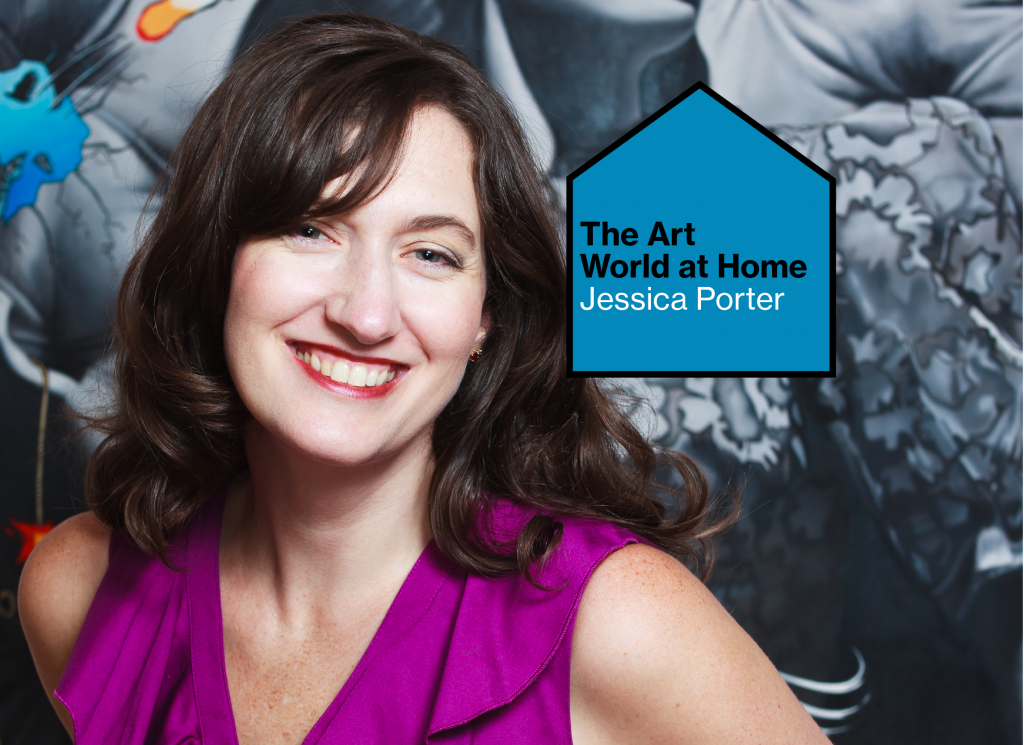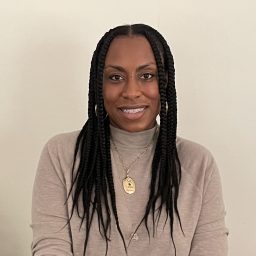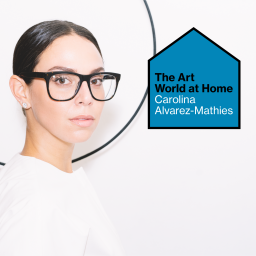The art world is slowly coming out of lockdown, but many decision-makers and creatives are still staying close to home. In this series, we check in with curators, historians, and other art-world professionals to get a peek into their day-to-day.
Jessica Porter, the executive director of ArtTable, a nonprofit supporting women professionals in the visual arts, was looking forward to a busy 2020. The New York-based organization, which now has nine chapters across the US, celebrated its 40th anniversary in April.
When the art world hit pause on in-person events this spring, Porter and her team quickly swtiched gears, offering a full range of online programming, including film screenings and webinars. At a time where many arts organizations have furloughed or laid off workers, ArtTable also maintains an online job board to help members looking for new employment.
We recently caught up with Porter, at home in New York’s Alphabet City, about missing summer softball, what artwork serves as her Zoom backdrop, and her love of science fiction.
What are you working on right now?
Managing a small organization pulls me in a million directions every day, especially right now. But one of the things I am most proud of is our fellowship program. Despite the chaos in everyone’s working situation, we have eight amazing fellows working at the Chrysler Museum of Art in Norfolk, Virginia; Los Angeles Contemporary Exhibitions; the Yerba Buena Center for the Arts in San Francisco; Oklahoma Contemporary; the Art Students League of New York; the Laundromat Project; the Museum of Chinese in America; and Socrates Sculpture Park in New York.
I’m so proud of the fellows for making the shift to remote work in stride, and grateful to the organizations that are offering them really meaningful experiences despite the challenges of never having met them in person.
I’m also tremendously excited about the way that ArtTable programming has been able to shift online. So much of our work is about making connections between women, and while in the past that’s been primarily IRL, our online programming has helped us forge even more of a network—our members across the country are interacting with one another in ways that are amazingly fruitful and generative.
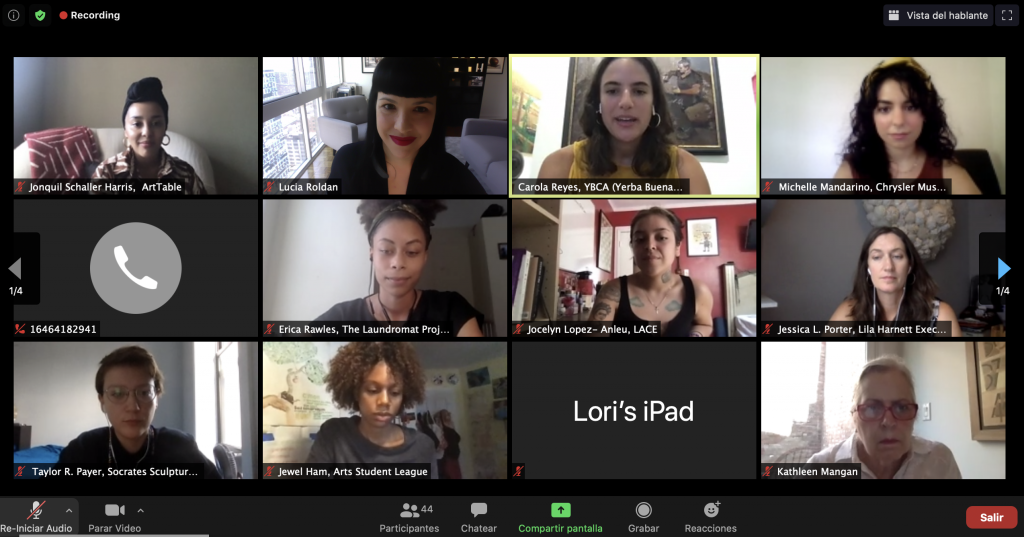
ArtTable’s fellowship program meets on Zoom. Photo courtesy of ArtTable.
Walk us through the when, where, and how of your approach to this project on a regular day.
This year, I was thrilled that the fellowship was a top priority and I got to be more involved with it than normal. We doubled the size of the program, added additional funding, and paid our fellows more.
Most of the day-to-day of the program has been managed by Jonquil Schaller Harris, our amazing membership and communications manager, who provides the mentorship connections to this program through our membership, and by Lucia Roldan, our incredible education and community engagement coordinator. She had the daunting task of finding exactly the right candidate for each institution and organizing everyone’s schedule.
What is bothering you right now (other than the project above and having to deal with these questions)?
One of the things that this pandemic has really forced into the light is the racial and economic injustice in American society. I think every day about how the art world is in many ways a part of this, and how the art world at large and ArtTable specifically can be a part of meaningful change.
What was the last thing that made you laugh out loud?
I’m a bit of a sci-fi person and I was reading this series of books by Martha Wells about a murderbot. The way she writes AIs and robots generally just gives me a full-on belly laugh at times.
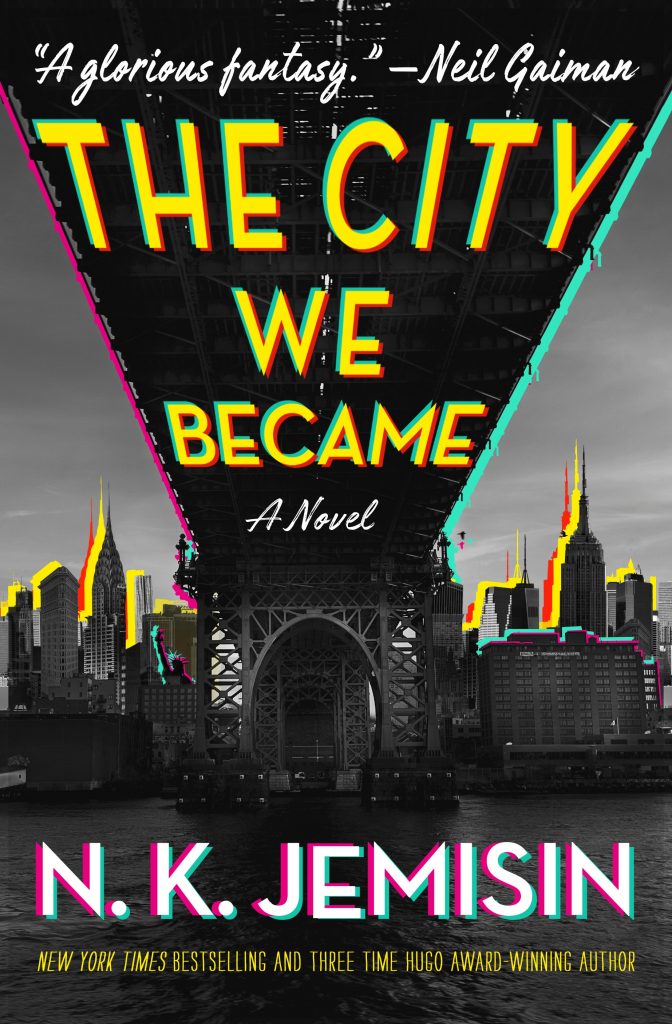
The City We Became by N.K. Jemisin. Image courtesy of Orbit.
Are there any movies, music, podcasts, publications, or works of art that have made a big impact on you recently? If so, why?
My longtime favorite podcast is LeVar Burton Reads. He can make any story come alive around you. More recently, I’ve been listening to This Land and Speaking of Racism. Exploring new podcasts has been a great way to feel engaged with others during isolation. I also recently enjoyed reading The City We Became by N.K. Jemisin. It made me long for the New York City that we are all missing right now.
What is your favorite part of your house and why?
I have a small extra room that has become my office during the pandemic. Before that, I used it as a place to put my feet up, have a cup of tea, and read a book. I need to do more of that in this room and less working, so it remains one of my favorite spots!
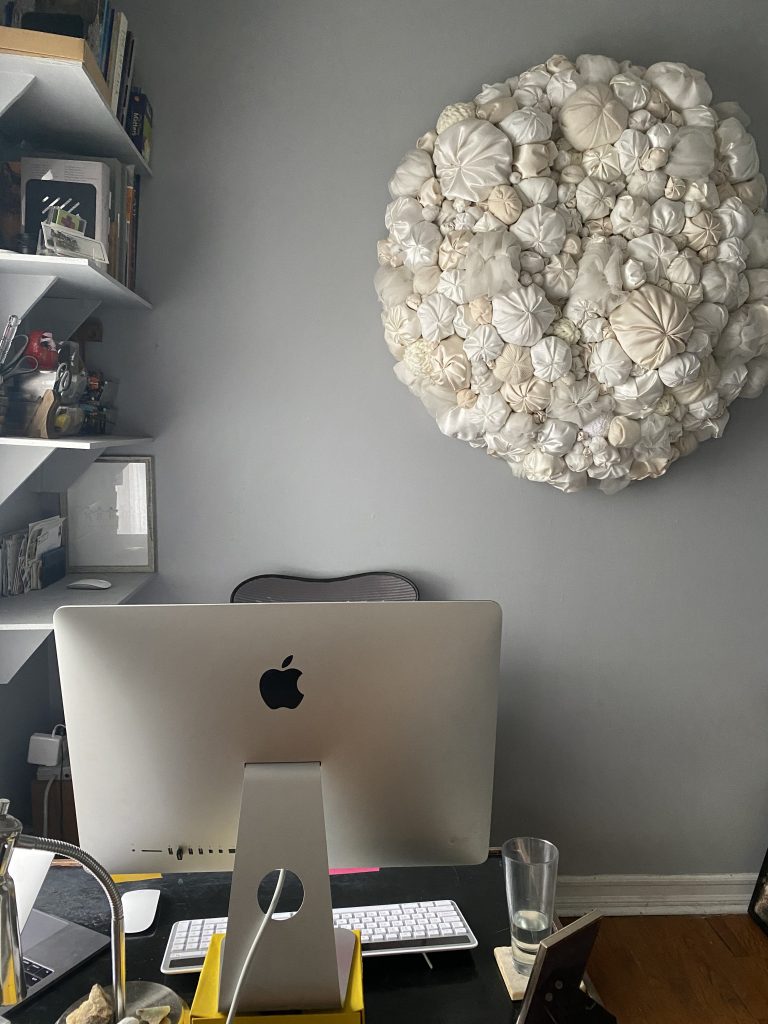
Jessica Porter’s home office, with Dream (2014) by Natsuko Hattori. Photo by Jessica Porter.
What’s your favorite work of art in the house and why?
As a former gallerist, I am lucky to be surrounded by so much artwork. Each work has a special memory about an artist I worked with or a particular show I curated. First Dream (2014) by Natsuko Hattori is behind me in all my Zoom calls so it becomes a bit of a staple in my life of isolation. Her work has so much texture and the shapes of each just bring a bit of joy when people see them. It’s also quite large at 48 by 48 inches, so it really fills my favorite little room.
Are there any causes you support that you would like to share? If so, what, and why is it/are they important?
I’m constantly moved by the ways artists have been supporting one another and their communities during this moment. Have you seen Lauren Halsey’s project summaeverythang in LA? She pivoted what was meant to be a community center adjacent to her studio into a distribution center for free, fresh, organic produce. It’s rooted in her artistic practice and in the legacy of activist organizations, and totally responsive to a very specific, urgent, local need.
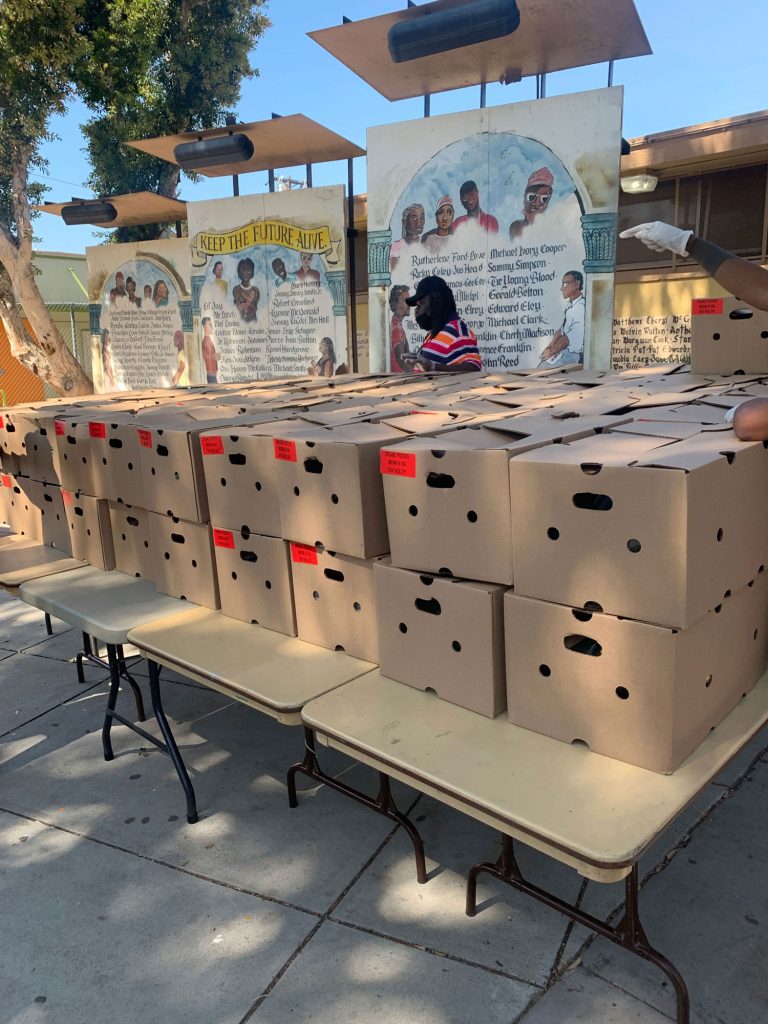
The free organic food distribution at Lauren Halsey’s Summaeverythang Community Center. Photo courtesy of Summaeverythang Community Center.
What is your guilty pleasure?
Sports! I miss watching and playing sports. I would normally be coaching or playing softball most of the summer. I did recently start playing tennis, which is a bit more COVID friendly, but my skills are still developing.
I also took up yoga and have weekly online classes with my friend Liz Gwinn, who worked for a number of years at the Studio Museum in Harlem. She coincidentally began a yoga training in Costa Rica right at the beginning of the pandemic and is still there. She talks me through downward dog with the sounds of monkeys and birds in the background. It’s pretty nuts.
What’s going on in the kitchen these days? Any projects? And triumphs or tragedies?
The isolation has made me into a bit of a planner of meals. Pre-pandemic, I was home to an empty kitchen and lucky to have milk in the fridge at any given time. Now I panic because the kitchen is too full.
I recently accidentally misjudged my weekly vegetable order and ended up being a vegetarian for about 10 days! I learned to make homemade applesauce and became pretty creative with (four gigantic!) butternut squash.
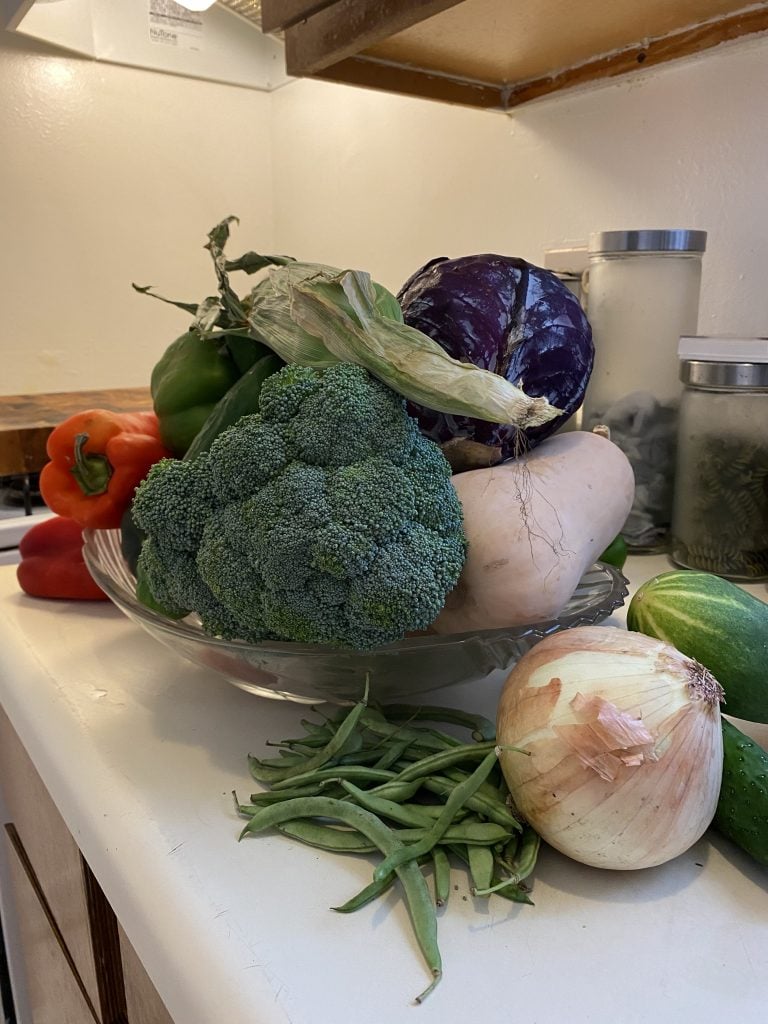
An abundance of vegetables. Photo by Jessica Porter.
Which two fellow art-world people, living or dead, would you like to convene for dinner, and why? Bonus: Where would you want the dinner to be, and why?
Louise Bourgeois and Leonor Fini. These two women were artists, but they were also feminists and part of a much bigger picture for women as a whole, not just the art world. I’d love to hear their personal perspectives on how art can serve as a vehicle for social change. I would imagine the dialogue between them to be quite intense, and maybe a few plates would be thrown.
I think the dinner would only be safe at Louise’s house in the West Village. She liked to host gatherings and salon-style conversations and she would be free to really express herself if needed. (Hopefully, my sports skills would mean I could dodge any plates effectively!)
